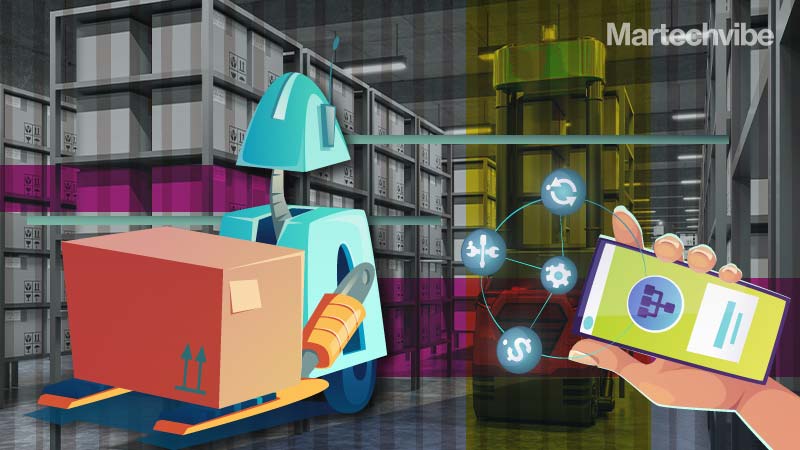These Packaging Trends are Helping Marketers in 2022
It’s not just unboxing that gets customers excited, the entire packaging game is a marketer’s tool While the pandemic rewrote several business values and strategies, it has enhanced the packaging industry to best suit customers’ changing behaviour and become a marketer’s favourite tool. Yes, unboxing videos are popular marketing methods to woo customers, but it […]
Topics

It’s not just unboxing that gets customers excited, the entire packaging game is a marketer’s tool
While the pandemic rewrote several business values and strategies, it has enhanced the packaging industry to best suit customers’ changing behaviour and become a marketer’s favourite tool. Yes, unboxing videos are popular marketing methods to woo customers, but it would not be meaningful if not for good packaging. Designers are raising the stakes to stay ahead of their competitors.
Many brands have started outsourcing to packaging companies, but some still prefer to keep their packaging line in-house. Automation is the performance-enhancing factor in both cases, especially in 2022, when supply chain woes persist.
“The keyword for 2022 is breakdown. Due to fear and radically altered lifestyles, there will be continued pressure and uncertainties. This will lead to more disintegration in systems, trust, and supply chain,” behavioural scientist Patrick Fagan told Martechvibe.
A Vox report claimed that the packaging industry’s “just in time” model added to the supply chain problems. While they can disrupt CX, it is possible to rein it in, provided the right questions are asked, and actions are undertaken. “If supply chain issues are likely to continue for the intermediate-term, then those delays and challenges need to be built into the experience. They need to be mapped, designed, and planned. Organisations need to ask: what can we do during this vast experience to create or maintain positive emotional connections with our customers?” said CX expert Adam Toporek.
One answer is packaging. According to GlobalData’s 2021 global consumer survey, consumers worldwide prefer packaged products across all categories. The post-pandemic world is inclined towards sustainable packaging. Even coca-cola introduced its sustainable packaging bottle prototype.
A Survey Monkey report states that one in every three consumers prefer eco-friendly packaging options, and 35 per cent of customers would favour sustainable products even if there were cheaper alternatives.
Customers want packaging to show signs of empathy, care, and eco-friendliness. The most common trends include protective packaging, vintage packaging, and edible packaging, but with the increasing demand, packaging requirements are getting more complex, technology-oriented and, well, interesting.
2022 Technology Trends in Packaging
“Less is more” is a popular statement in several contexts, including the packaging industry. Marketers are realising that simple packaging and a little jazz of technology are all it takes to convince potential customers.
2021 saw several AR and VR packaging stories, including Pizza Hut’s AR Pacman game. With the metaverse craze suddenly taking over the industry, experts believe AR and VR packaging will continue to be a vital packaging trend for marketers hop on.
To achieve this, connected packaging, aka smart packaging, can help. The global smart and intelligent packaging market is expected to cross $29 billion by 2028, with a CAGR of 6.2 per cent. Some key players include Sealed Air Corporation, Amcor limited, Sysco Corporation and Eastman Chemical Company.
Incorporating technology, such as digital printing technology, into design benefits both the brand and the customers — good CX for customers and knowledge about customer behaviour and preferences for the brand.
From enhanced unboxing experiences and product preservation and security to smart and active packaging is expected to rise in 2022. According to Grand View Research, the total revenue of smart packaging is expected to cross $26 billion by 2024.
Smart packaging allows marketers to track customer behaviour with more convenience. Customers also benefit from tailored experiences that stem from customer demands. Printed electronics is a common technology used, and they are used in the form of near-field communication, ambience intelligence, radio-frequency identification, compact sensors and data storage offerings. It offers customers enhanced interactions in product interaction, online connections, and digital infotainment. For instance, Coca Cola created an illuminated label using OLEDs that is printed. It was an award-winning innovation in the packaging ecosystem.
The future lies in intelligent packaging, using Near-field communication or NFCs, a set of communication protocols for communication between two electronic devices. NFC provides a low-speed connection with a setup used to bootstrap capable wireless connections. Additionally, NFC is more resistant to cloning, meaning it prevents counterfeiting and enables authentication of the product, further driving trust.
Currently, the costs associated with NFC are high, so it has been limited to high value-low volume products.
QR codes are one of the easiest methods for connected packaging. The codes are unique thumbprint that allows one to identify and communicate targeted information. With connected packaging, validating authenticity, collecting data for market research, and communicating marketing messages become easier. From personal care to industrial chemicals industries, connected packaging is becoming a popular option.
In the last few years, additive manufacturing technology has been capturing marketing interest to produce complex designs. Experts reckon 3D printing can increase the possibility of print-to-order manufacturing. 3D printing offers increased flexibility, efficiency, and cost reduction for packaging prototypes.
Experts believe with the increasing quality, speed, and materials in the coming years, 3D printing can have a more significant than ever impact on the packaging industry. It will lead to smarter and smaller spaces leveraging large scale printing for packaging, coupled with RPA, cognitive computing or IoT connectivity.
By 2028, additive manufacturing processes may provide personalised, on-demand packaging solutions.
AI and Machine Automation will also continue to play a significant role. Soon, consumers will demand made-to-order products be packed and shipped quickly. This customer demand will depend on several technological innovations, including predictive maintenance, robots that work in conjunction with human beings, cobots, and IoT standardisation.
Smart warehousing is a crucial step in fulfilling this demand. Alibaba currently leverages smart warehousing, and their automated robots can carry 500 kgs of goods and coordinate package placements. With a partial or a fully automated packaging line and collaborative robots, warehouses become more manageable, contributing to optimised packaging processes.
Blockchain can disrupt the packaging industry. How? With a decentralised digital ledger, the technology can eliminate the need for shipping, paperwork, inefficient and wasteful practices in the packaging industry.
With a higher level of tracking, security, counterfeit protection, and cost-effectiveness, blockchain can bring trust in the customer packaging industry. For instance, UPS has invested in smart logistics via blockchain, and ShipChain is set to revolutionise the entire logistics platform.
Recently, the Thin Wall Integra project combined the technical acumen of Arburg France; Collomb, a French toolmaker; Pagès Group, a packaging robotics expert; in-mould label (IML) maker Verstraete; and material handling equipment supplier Koch-Technik. It resulted in a fully-automated moulding of a thin-walled IML-decorated container. The container is made up of 55 per cent recycled material.
Nanotechnology is always on a marketer’s radar with promises of reduced packaging waste and sustainability. Considering bio-nano composites’ potential to replace non-biodegradable and petroleum-based plastic, the nano-coating market is growing at 25 per cent CAGR.
A card swipe or a smart scan, packaging materials can provide extensive information, including advanced tracking, integrated product interaction, theft protection, and interactive visuals. Experts believe nano-materials will soon be a big player in several industries such as food and pharmaceuticals.
It’s only the beginning of nanotechnology in the packaging industry. Experts indicate major innovations apart from the use of discarded packaging chips in the production of lithium-ion batteries.
Package Design Metrics
Design analytics is a trend that helps marketers measure their packaging strategies, especially when a replaced packaging design is seemingly more effective but fails to grab consumer attention. With design analytics, marketers evaluate the old against the new across several performance categories: findability, purchase preference, communication, and diagnostics. The groundbreaking data can help marketers determine the sales performance to the T.
Designalytics is a company that offers such metrics. According to the platform, “Designalytics’ unique measure of purchase preference is 96 per cent predictive, and our unprecedentedly high data quality is a primary contributor. Designalytics objectively determines the top purchase-driving attributes in a given product category through research with hundreds of consumers, then utilises a forced-choice exercise to ascertain which design is communicating each attribute most effectively.”
Enhanced customer experience through relevant data collecting is a marketer’s priority. Steve Lamoreaux, founder and CEO of Designalytics, said: “Data can be incredibly helpful at the start of a redesign initiative — it provides an objective view of which assets to protect, edit, or delete.”
If you liked reading this, you might like our other stories









































































































